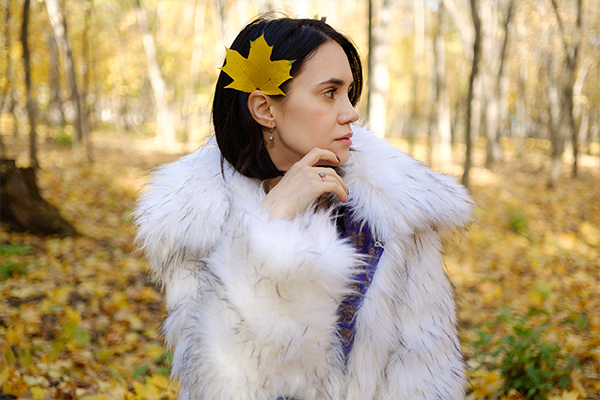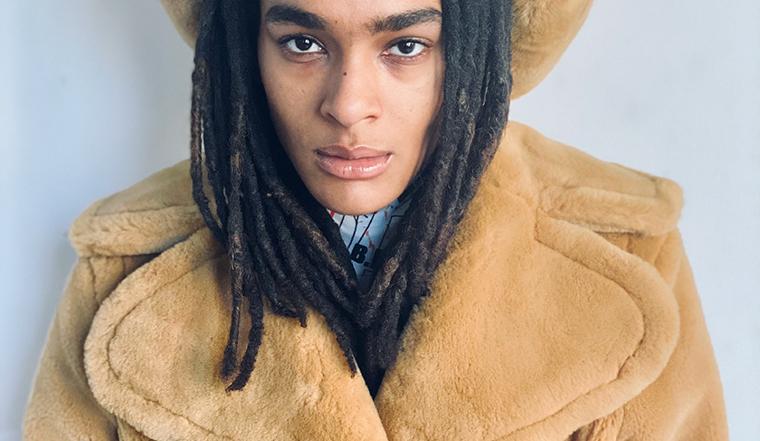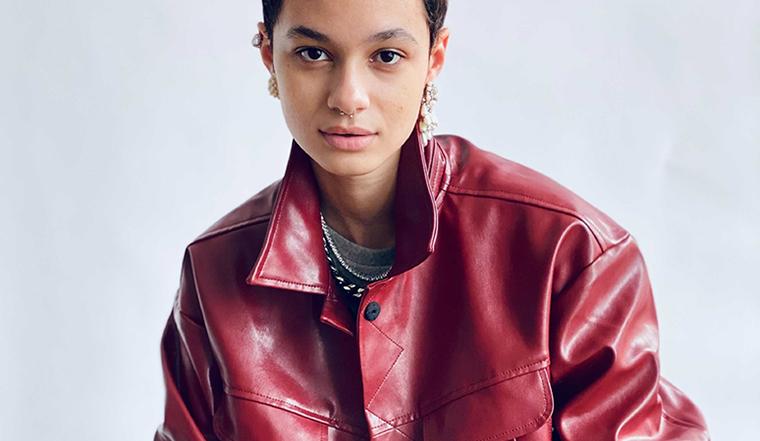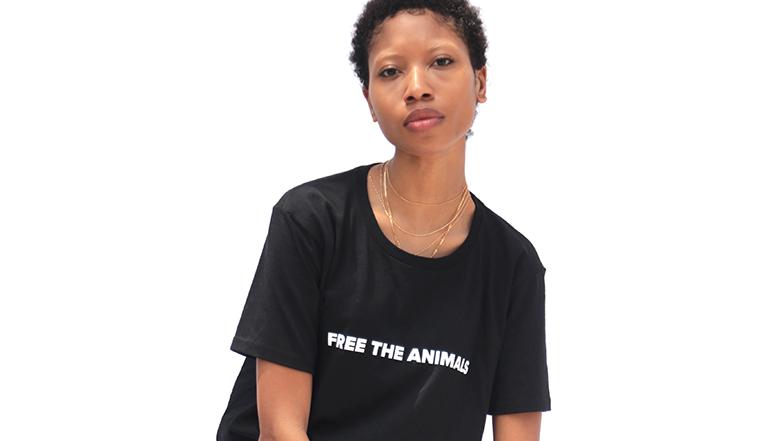An Expert’s Opinion on Animal-Free Fashion (Interview with Kym Canter, CCO)

Sustainable fashion is charging forward in creating animal-free alternatives to fur and leather. The processes of producing commercial fur and leather are disastrous for the environment; not to mention the ethical concerns regarding animal rights. Considering this, fashion executives have spent decades searching for viable alternatives that avoid the issues associated with animal materials.
The biggest hurdle in this initiative? For years, the only available alternatives to fur and leather were made of synthetic fibers derived from fossil fuels, making them arguably worse for the environment than the “real thing” — Until now. Through a groundbreaking collaboration between technology and nature, the fashion industry is producing animal-free materials that maintain the qualities of fur and leather without the negative environmental impact.
Although these processes are fairly new, some brands are already incorporating animal-free alternatives into their products. One such brand is House of Fluff: This New York City based brand is focused on providing luxurious animal-free products, created in uniquely sustainable ways. I was lucky enough to speak with House of Fluff’s founder Kym Canter about her brand’s initiative, as well as the fashion industry’s shift towards sustainable & vegan materials — and she had a lot of valuable insights to share.
A Uniquely Chic Mission
As a former fur fanatic herself, Kym Canter shared with me that in 2016 she experienced a change in her ethics regarding fur. She began searching for an animal-free alternative that would give her the same feeling of beauty & warmth, without harming the environment. Unfortunately, she found that this didn’t exist in the mass market. Her solution?
“I decided I would make something for myself.”

Kym’s friends loved her animal-free fur, and asked her to make coats for them as well. In her search for a viable alternative, Kym found an entire market of consumers who wanted the same thing — and so, House of Fluff was born.
In the three years since House of Fluff began, the brand has been making big moves in vegan fur and leather alternatives, most recently the launch of their own BIOFUR™. Created by Kym herself in collaboration with textiles experts, BIOFUR™ is treated with special additives that actually allow the garments to biodegrade completely at the end of their life.
Kym emphasized that in creating House of Fluff, “It wasn’t just about the animal welfare pillar, but it was also about sustainability…and not bringing more wasteful product into the world”.
House of Fluff creates products that last, allowing them to be passed down and valued through generations; but this “upstream solution” ensures that no extra waste is created, should the garments end up in a landfill or the ocean.

Why Bio-Based is Better
In addition to avoiding excess waste, bio-based alternatives to fur and leather also have the potential to save millions of animals per year from being slaughtered for their skins. While this is good news for animals, it’s also good news for the environment, because factory farms generate an enormous amount of pollution. Most of this pollution is related to animal waste: Animals on factory farms produce 130x as much waste as the entire human population! This animal manure flows into waterways, seeps into the soil, and releases tons of greenhouse gases like ammonia and methane into the air.
The leather industry is particularly pollutive, considering that leather tanneries use toxic materials to turn raw animal hides into toughened leather. This process requires an insane amount of water: In Bangladesh alone, it’s estimated that 7.7 million liters of wastewater are produced through leather production every year. The contaminated wastewater from tanneries runs into natural waterways across the planet, many of which are sources of drinking water. This toxic runoff causes massive pollution, permanently damaging miles of water & soil and causing serious health issues for people who work in or live near the tanneries.

Some Promising Alternatives
Bio-based alternatives like Piñatex® pineapple leather, Desserto® cactus leather, and Mylo® mushroom leather are created in sustainable ways, avoiding the gross decaying of the planet associated with animal materials.
Piñatex® is leather made from pineapple leaves, which are a by-product of the pineapple harvesting process. Therefore, this material actively avoids tons of agricultural waste by turning the discarded pineapple leaves into a new material.
This idea of utilizing existing resources is also at the core of Desserto® cactus leather, since the cactus is the most naturally abundant plant in Mexico. House of Fluff recently released a collection of jackets made from this material, as cactus leather is light & flexible enough to be made into garments.
Mylo® mushroom leather is also (literally) rooted in sustainability. It is made from mycelium, the durable mushroom root system which has fed and held together our soil for billions of years.

These three materials are considered the frontrunners of the animal-free initiative, but there are many other promising materials in the works. For example, lab-grown leather allows brands to produce the exact amount of material needed for a product — therefore creating zero waste.
When Kym and I discussed this genius breakthrough, she explained, “Right now it’s very expensive…It’s not really ready to come to market in any kind of mass way, but I think that when it is, it will be a huge, huge game-changer.”
While the shift away from unsustainable synthetic alternatives is still in its beginning stages, bio-based alternatives have the potential to completely change the fashion industry.
Is Animal-Free The Future of Fashion?
Many fashion executives believe that animal-free alternatives are absolutely the future of fashion — and Kym believes that they’ll eventually replace real fur and leather. However, an essential part of this process is educating the consumer. For generations, the powerful fur and leather industries falsely advertised their materials as “natural”, and created the idea that owning these expensive animal skins made a person higher up in society. Fur and leather were wrongly placed on a pedestal; so today it’s important that consumers know the true cost of their fur and leather purchases.
Fur and leather are NOT “natural.”
While animal skins alone are a natural material, the process of turning the skins into garment textiles is anything but. Furs and leathers are processed using dozens of artificial chemicals to prevent them from biodegrading naturally, and the pollution caused by these chemicals destroys nature itself.
Fur and leather are NOT more sustainable than other alternatives.
The bio-based alternatives created today are far more sustainable than real fur and leather. Simply leaving animals out of the equation makes a huge impact, since livestock agriculture produces 14.5% of the world’s total greenhouse gas emissions. Using existing plant materials also avoids excess waste, and many bio-based leathers use natural, non-pollutive chemicals & dyes.
Owning fur and leather is NOT a symbol of status.
This may seem obvious today, but because of this outdated attitude, society treated all “faux” furs and leathers as worthless. Perhaps that’s why all animal-free alternatives relied on unsustainable fossil fuels for so long. Thankfully, today there are many more sustainable options — and a more conscious consumer to sell to.

A New, Educated Consumer
As younger consumers gain more spending power, they are also demanding more information and transparency from brands about the environmental impact of their products. These consumers didn’t grow up thinking that fur and leather were symbols of status, like previous generations — In contrast, many of us saw fur and leather through the lens of animal activists, who stand against these industries. These are the conscious consumers driving the spread of sustainable alternatives; because according to Kym, this demand is “a huge incentive for companies to seek out these materials.” Through individual action, we can make great change.
- Show your demand for fur-free: This automatic email generator tells top retailers that you don’t support their use of animal fur.
- Support brands that sell animal-free alternatives: Here’s a list of brands selling eco-friendly fur products (including House of Fluff!), and another list of brands using sustainable vegan leather.
- Be aware of false advertising regarding sustainability, or “greenwashing”: Check out this article to learn more about greenwashing.
- Spread the word: Tell your family & friends about these groundbreaking materials!
By continuing to create and popularize sustainable alternatives to animal-based materials, we can eliminate the complicated web of pollution that comes with them. As Kym points out, bio-based materials are going to be a huge game-changer in the fashion industry and beyond; and once this technology is available to a wider range of consumers, the impact of animal-free alternatives will be bigger than anyone could possibly predict.


Leave a Reply